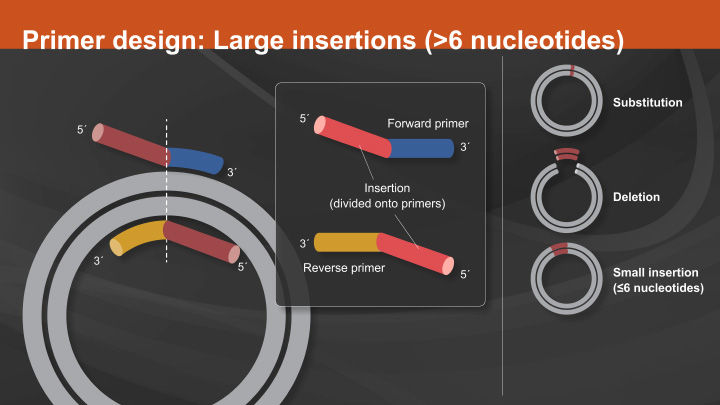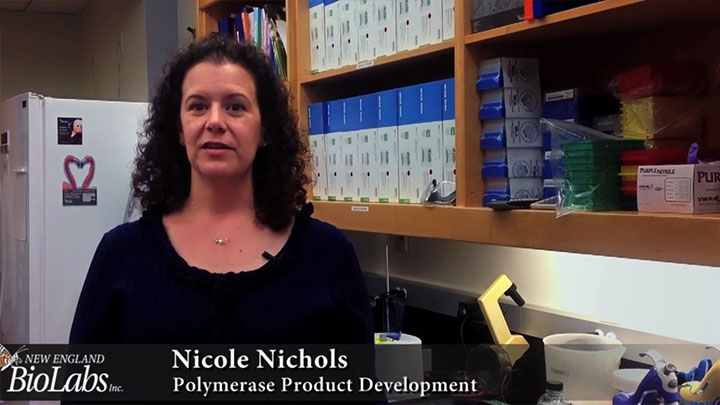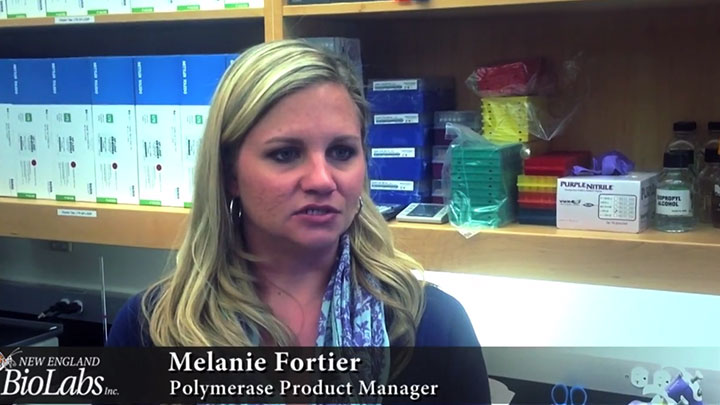Troubleshooting tips for Q5® Site-Directed Mutagenesis Kit
Script
The following tips can be used to help optimize reactions when using NEB’s Q5 Site-Directed Mutagenesis Kit.
If you find that the resulting plasmids do not contain the desired mutation and still contain the wild type sequence.
1. We recommend using ≤ 10 ng of template in the PCR step.
2. Alternatively, background can be reduced by increasing the KLD incubation time to 30-60 minutes.
3. Ensure proper design of the mutagenic primers. For this we recommend using our online tool NEBaseChanger™.
4. Optimize PCR conditions. High fidelity polymerases benefit from a Tm+3 annealing temperature as an estimate.
If you observe low or no PCR product.
1. First check to see whether you have PCR product by agarose gel electrophoresis.
2. If there is no PCR product, ensure that the optimal annealing temperature (Ta) is used. High-Fidelity polymerases, such as Q5, benefit from a Tm+3 annealing temperature. Use NEBaseChanger™, NEB’s online primer design tool to calculate annealing temperature (Ta).
3. Ensure that the elongation time is adequate for the plasmid length. We recommend 20–30 seconds per kb of plasmid.
4. Ensure that the final concentration of each primer is 0.5 μm.
5. When ordering your primers, have them purified with polyacrylamide gel electrophoresis or PAGE.
If you have PCR product, but low or no colonies...
1. first ensure that the primers are designed properly. The 5´ ends of the two primers should align back-to-back unless your desired outcome is a deletion.
2. For best results, primers should be designed and annealing temperatures calculated using our online tool NEBaseChanger™.
3. Use 1 μl of PCR product in the KLD reaction. Carrying too much PCR product forward can decrease transformation efficiency.
4. If PCR yield is low, more product can be added, however a buffer exchange step, such as a PCR purification, must be performed prior to transformation.
5. Use 5 μl of the KLD reaction in the transformation. If more KLD reaction is added, a buffer exchange step, such as PCR purification, should be performed prior to transformation.
6. Ensure that the selectable marker in the plasmid matches the selection agent used in the plates.
If your specific question was not addressed by these tips, you can always contact our technical support team at info@neb.com for further assistance.
Related Videos
-

Overview of the Q5® Site-Directed Mutagenesis Kit -

Why Choose Q5® High-fidelity Polymerase? -

Important Tips for Q5® Polymerase

